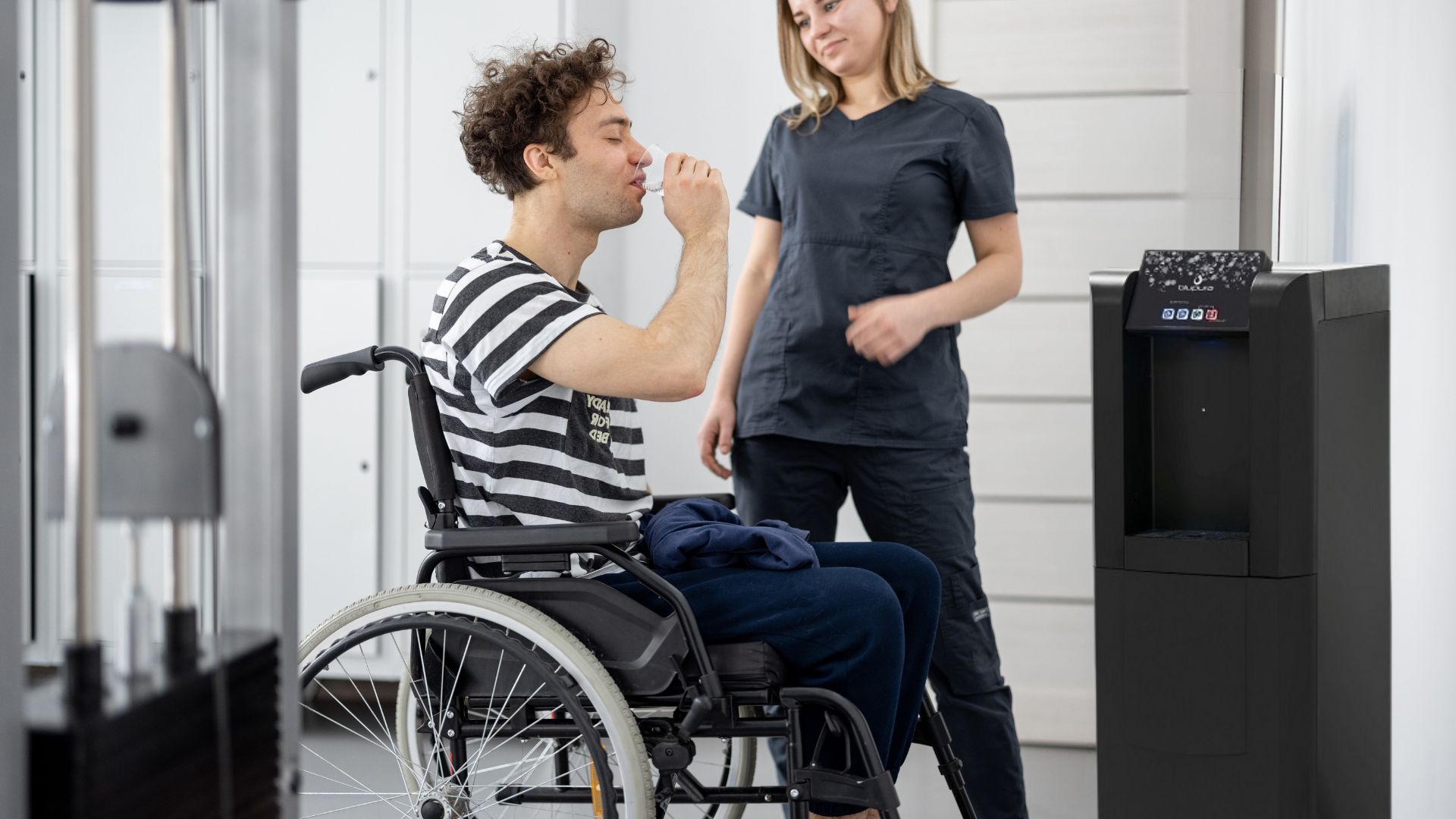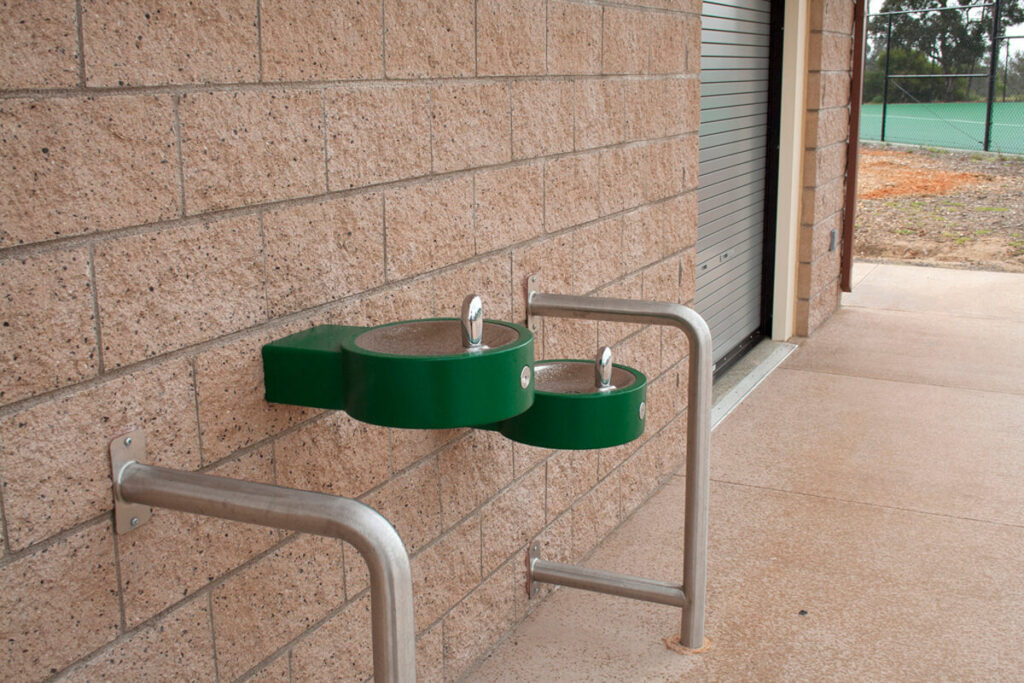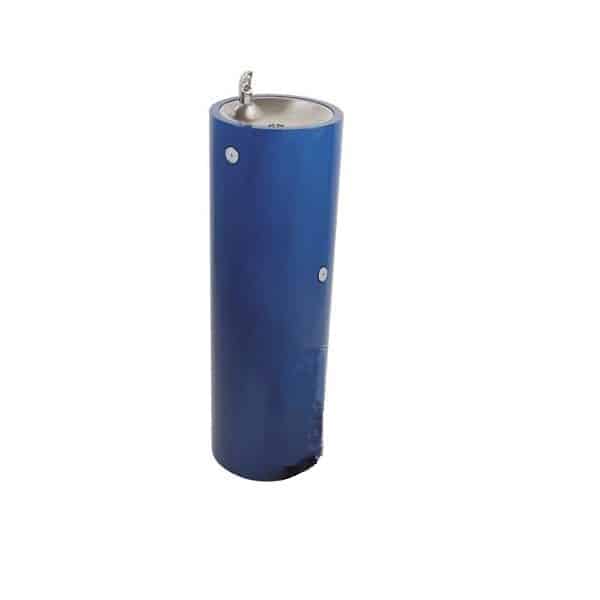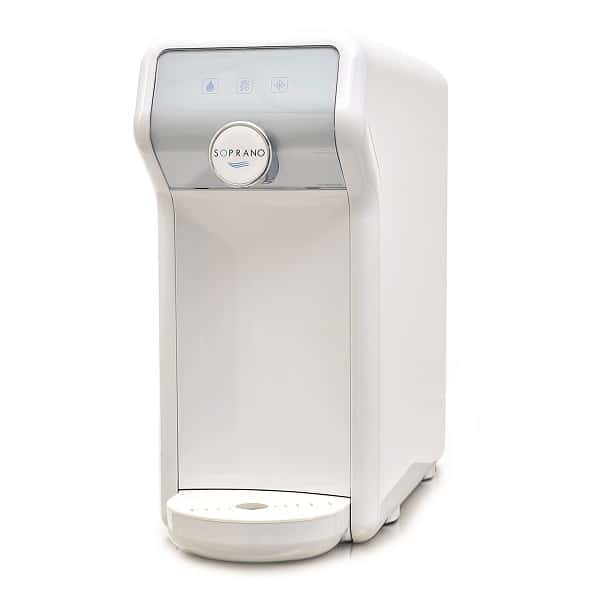Academy
Spa brands
In this section you will find a range of practical information related to our solutions. In the articles, we share our experience, discuss implementation steps and highlight good practices. It is a reliable source of information and advice on the provision of drinking water in public spaces, the legal regulations in this area, the benefits of installing drinking water dispensers and the technological aspects in this field.
We look forward to reading!
Accessibility first - how should drinking water spigots and dispensers be constructed?

Access to drinking water in public spaces and public buildings is nowadays not only a question of comfort, but above all of equality and accessibility. Both outdoor springszneas well as indoor water dispensers should be designed so that they can be used by people with disabilities - especially those in wheelchairs. Appropriate design solutions describe both American ADA regulationsas well as Polish "Catalogue of good design practices" issued by the Ministry of Funds and Regional Policy.
Drinking water wells - what do the ADA and Polish guidelines say?
In accordance with ADA (Americans with Disabilities Act), drinking water outlets must be designed to allow full and convenient access for wheelchair users. Key principles are:
- The height of the bowl edge should not exceed 850 mm from floor level.
- The spa should have a clear space under the unit of min. 685 mm, 760 mm wide and 480 mm deep to allow for wheelchair access.
- The bowl should be placed on the side of the structure (known as the side bowl), allowing you to comfortably pull up and drink without twisting your body.
- The controls - buttons or sensors - should be ³tfor one-handed operationwithout the need for force.
Polish Catalogue of Good Design Practices confirms similar requirements. According to it, urban infrastructure facilities, such as sprinklers or watering holes, should:
- Have the ability to be operated by people with limited strength and range of movement.
- Be clearly marked and easy to locate,
- Have barrier-free access - no thresholds, adequate paving all around,
- Be placed at an ergonomic height for both children and adults, including those with disabilities,
- Have the ability to be operated by people with limited strength and range of movement.
Indoor water dispensers - availability in offices and public facilities
For indoor water dispensers (e.g. in offices, schools, clinics), there are also clear standards:
- The top edge of the screed should be at a maximum height of 850 mm from the floor,
- The unit must not have an enclosure that prevents wheelchair access - a minimum space depth of 480 mm is required,
- The distributor must not be located in a cramped corridor or corner - access from the front should be unobstructed,
- The water pouring button or touch sensor should be easily reachable and no higher than 1200 mm.
By properly hanging the unit on the wall and maintaining clearance underneath, a person in a wheelchair can easily drive up and pour water into a cup or bottle themselves.



Inclusive design is a standard, not a luxury
Adapting facilities to the needs of all users is a regulatory obligation, but also a sign of social responsibility and design awareness. With the right approach, everyone can use public spaces equally, comfortably and safely.
Both the American ADA standards and the Polish design recommendations make it clear: universal design is not a choice - it is a necessity. By investing in sprinklers and dispensers that comply with these standards, we ensure not only accessibility, but also the dignity of users.





